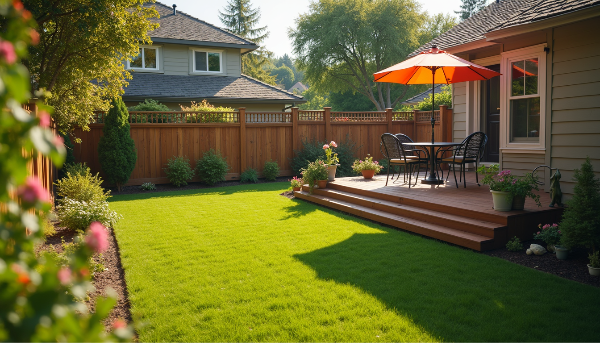Caulking: A Home Improvement Essential
- Jed Roper
- Sep 14, 2023
- 4 min read
Updated: Aug 15
Caulking is a sealant that is used to fill gaps between materials. It is a common home improvement project that can be done to improve the appearance and energy efficiency of your home. Caulking can also help to prevent water damage and mold growth.
Types of Caulk
There are two main types of caulk: silicone and latex. Silicone caulk is more durable and water-resistant than latex caulk, but it is also more expensive. Latex caulk is less expensive and easier to apply, but it is not as durable or water-resistant as silicone caulk. Please use something paintable when caulking next to or between painted surfaces. Pure silicone caulk is not paintable, requiring removal and replacement with paintable caulk when used near painted surfaces. While durable and water-resistant, silicone is less suitable for areas requiring paint adhesion, such as trim or baseboards, where paintable latex or acrylic-silicone blends are often better choices.
When to Use Caulk
Caulk can be used to seal a variety of gaps, including:
Around windows and doors
Between baseboards and trim
Around bathtubs and showers
Along countertops and backsplashes
In cracks in masonry
How to Caulk
Caulking is a relatively simple process, but it is important to follow the instructions on the caulk tube carefully. Here are the basic steps:
Clean the area to be caulked. The surface should be clean and dry.
Cut the tip of the caulk tube at a 45-degree angle. The size of the opening should be slightly larger than the gap you are filling.
Insert the caulk tube into a caulk gun.
Apply the caulk in a smooth, even bead.
Tool the caulk with a wet rag, finger or a caulk tool to smooth it out.
If the caulk bead shrinks and leaves a gap, apply another thin layer and smooth it.
Allow the caulk to dry completely before painting or staining.
Tips for Caulking
Here are a few tips for caulking:
Use the right type of caulk for the job.
Make sure the surface is clean and dry before caulking.
Apply the caulk in a smooth, even bead.
Tool the caulk immediately after applying it.
Allow the caulk to dry completely before painting or staining.
Caulking Services St. George UT
Proper caulking seals gaps in your home, enhancing energy efficiency, preventing water damage, and reducing mold growth. Using caulk products formulated to withstand St. George’s extreme temperature fluctuations, low humidity, and intense sun exposure ensures long-lasting seals that protect your home year-round. Whether sealing windows, doors, or masonry cracks, choosing the right caulk—silicone for wet areas or paintable latex for painted surfaces—ensures a durable, professional finish. For expert caulking and painting in St. George, UT, call 3 Ropes Painting at 435-277-0834 for a free consultation.

Q&A on Caulking
Q: What is caulking?
A: Caulking is a sealant used to fill gaps between materials. It's a common home improvement project that enhances the appearance and energy efficiency of your home. Caulking also helps prevent water damage and mold growth by sealing out moisture and air.
Q: What are the types of caulk?
A: There are two main types of caulk:
Silicone Caulk – Durable and highly water-resistant, suitable for wet areas like showers but not paintable, making it less ideal for surfaces requiring paint adhesion. Consider acrylic-silicone blends for paintable, moisture-resistant options.
Latex Caulk – Less expensive, easier to apply, and paintable. While it’s more versatile, it is less durable and water-resistant compared to silicone caulk.
Note: Use paintable caulk, such as latex or acrylic-silicone blends, for surfaces that will be painted, as pure silicone caulk does not accept paint and may require removal.
Q: When should I use caulk?
A: Caulk is ideal for sealing gaps in the following areas:
Around windows and doors
Between baseboards and trim
Around bathtubs and showers
Along countertops and backsplashes
Cracks in masonry
Q: How do I apply caulk?
A: Here’s a step-by-step guide to applying caulk:
Clean the Area: Ensure the surface is clean and dry.
Cut the Caulk Tube: Cut the tip of the tube at a 45-degree angle. The opening should be slightly larger than the gap you're filling.
Insert into a Caulk Gun: Place the caulk tube into the gun and apply pressure.
Apply the Caulk: Apply the caulk in a smooth, even bead along the gap.
Smooth the Caulk: Use a wet rag, your finger, or a caulking tool to smooth out the caulk.
Check for Gaps: If the caulk bead shrinks or pulls away, leaving gaps, apply an additional thin bead and smooth it to ensure a complete seal.
Allow to Dry: Let the caulk dry completely before painting or staining.
Q: What are some tips for successful caulking?
A: Here are a few essential tips:
Use the right type of caulk for the job.
Make sure the surface is clean and dry.
Apply the caulk in a smooth, even bead for a professional finish.
Tool the caulk immediately after applying it to avoid uneven lines.
Allow the caulk to dry fully before painting or staining.
Q: Why is caulking important?
A: Caulking is an essential home improvement project that enhances both appearance and energy efficiency. It helps fill gaps between materials, prevents water damage, and stops mold growth. Proper caulking also improves your home’s overall comfort by sealing out drafts and moisture.
For assistance with caulking or painting, consider contacting a local professional painting service for expert service!




Comments